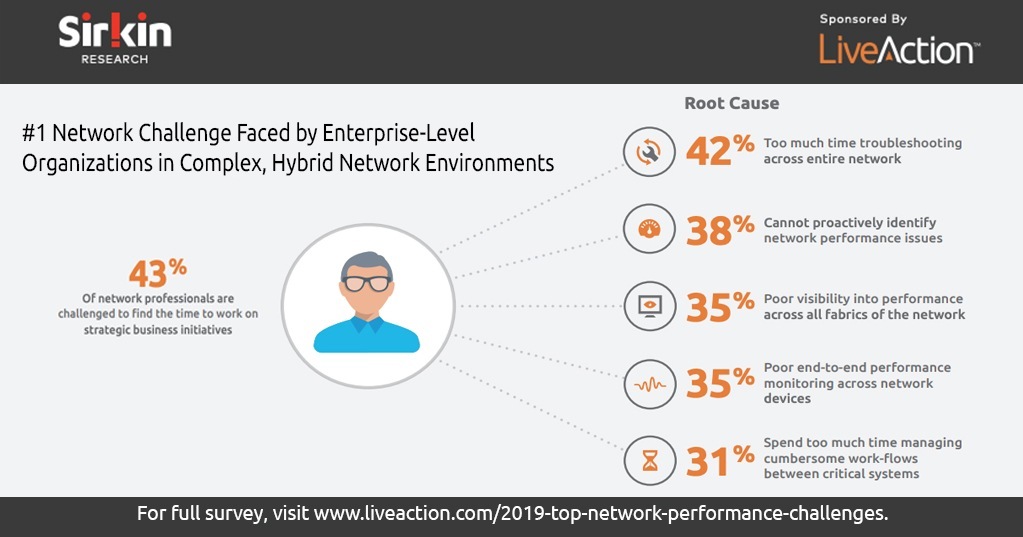
Network downtimes and failures are unfortunately an unavoidable reality in this digital age. Eventually, devices will fail, no matter how well built or monitored a network may be; as they say, a chain is only as strong as its weakest link. Regardless of the cause, these interruptions can cause frustration for employees, customers, and the IT staff that is tasked to manage the network in the first place. Enterprises will lose revenue, customer trust, and productivity during network outages, but what can we do to mitigate these eventualities?
The Cost of Network Downtime
Considering the time and effort that goes into building and maintaining a network, it should not be surprising that the cost of an outage can be astronomical for enterprises. In fact, data suggests that these outages can cost an enterprise anywhere from $300,000 to $400,000 — per hour. No matter the size of a business, there are always serious ramifications that can be difficult to recover from after a lengthy downtime.
As discussed, downtime isn’t purely a numbers game. While the business can see costs quickly stack up, there is also the loss of trust from customers. Frustrated customers flooding the internet with incredibly negative reviews can cause irreparable damage to a business and it will take more than a few coupons to dig oneself out of such a hole.
What are the Reasons for Network Downtime?

There are seemingly endless reasons that a network can go down. From natural disasters to accidentally unplugging the wrong cable in a datacenter – there are many reasons that an outage can occur. A few minutes of downtime is risky and expensive. But what happens when an application, server, or network goes down for hours or days? Corrupted data, frustrated vendors, staff incapable of doing their jobs – this is completely unacceptable. Let’s look at the most common causes that for a network downtime and what can be done to avoid it.
Human Error
No one is perfect, right? While we can all recognize that as a fact, human error is one of the top reasons for network downtime. There are many causes that networks can face costly downtime: misconfigured devices or applications, failure to upgrade or patch outdated technology, and improper planning of new IT initiatives to name a few. There are many steps in any process that can prove disastrous to an individual working on IT infrastructure – they don’t even need to be involved directly to do it! However, these issues can also be stemmed from as a problem that stems from the business itself. Understaffing an IT team can be detrimental to the network when resources are stretched too thin. It is critical to properly plan, staff, and manage the network to avoid these pitfalls. NetOps team manage increasingly complicated networks and not providing them with the proper network monitoring software, you are doing a disservice not only to your team, but your own bottom line.
Outdated Equipment
Procrastination isn’t exactly a virtue. Which is why many businesses find themselves struggling with mounting IT issues due to outdated equipment. If your company is using outdated equipment that is put under stress with modern tech stacks, performance and crashes will continue to occur. The network keeps the business, especially a digital business, running smoothly – be sure to tend to antiquated equipment and devices with urgency.
Hardware and Software Failure
Technology has advanced over the years and networks continue to be more reliable with built in failsafe measure to mitigate these issues. However, there are a few reasons that hardware or software failure can cause an outage.
- Viruses
- Age of device
- Mechanical/internal failure
- Limited storage capacity
- Firmware corruption

Additionally, software patches and upgrades that have not been tested, may even be incompatible, will pull down a network or application. Always testing any update or patch in a test or lab environment is a key component to avoiding a costly outage whenever a new update is rolled out. It is possible to minimize these incidents by having a plan in place, upgrading hardware or software, and testing it before it moves out of the test environment, and keeping an eye on storage capacity. Another key tip would be to push these updates at off hours for employees, so if there are any issues, it won’t impact productivity.
Misconfiguration
Device configuration, when done incorrectly, can cause prolonged periods of downtime. Misconfiguration is one of the top reasons that companies will find itself struggling with outages and downtime. A study found that misconfigured routers are behind about 36% of downtime due to configuration errors and software and hardware upgrades.Network downtime is disastrous for an organization, no matter the size. While there is no cure-all solution to prevent network downtimes, you can arm your IT team with the best tools to keep them ahead of the problem. LiveAction provides accelerated troublehooting solutions that can reduce MTTR and save your business time and money.



